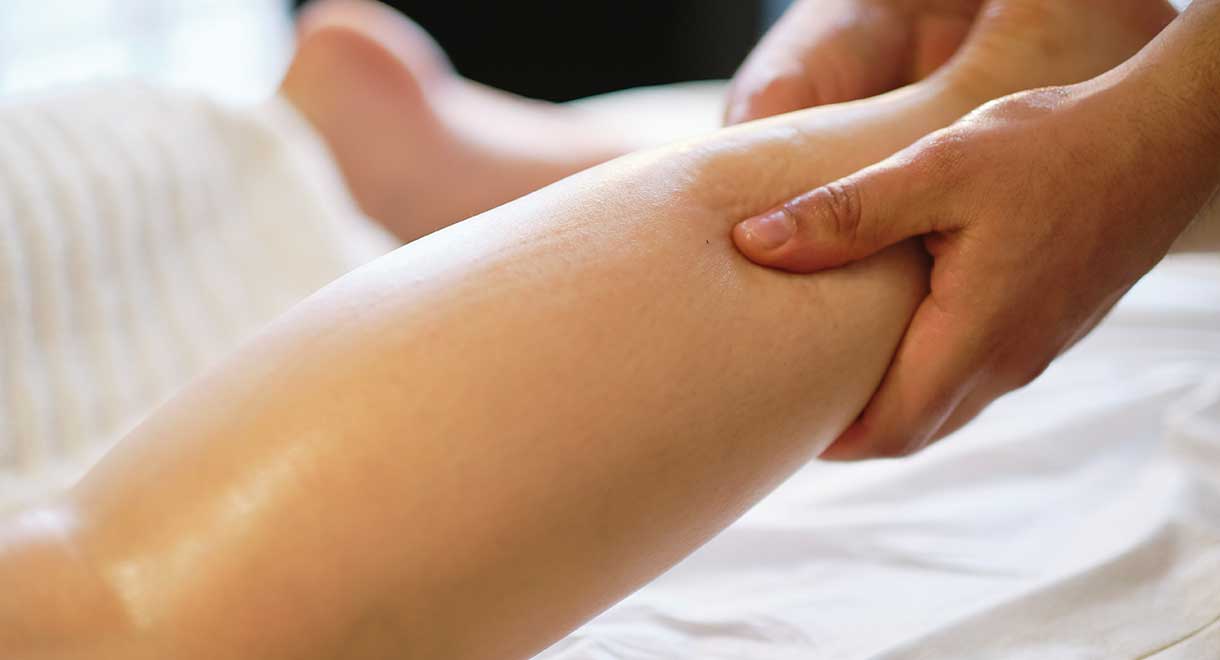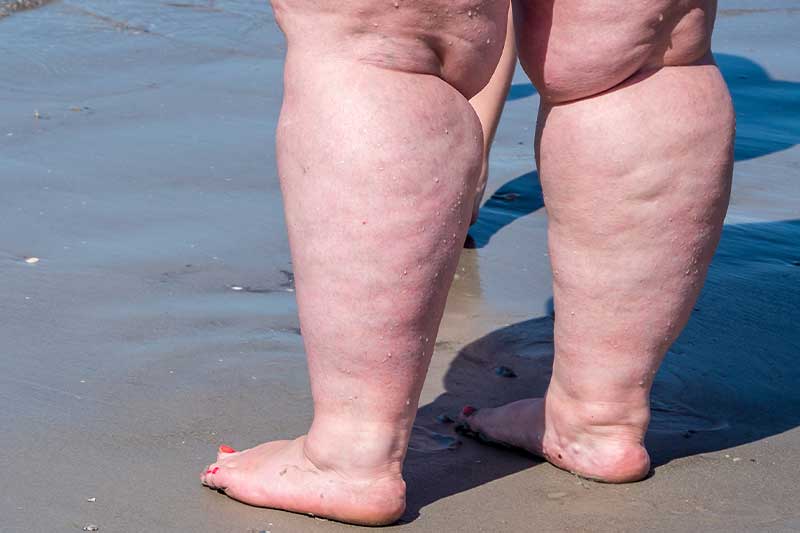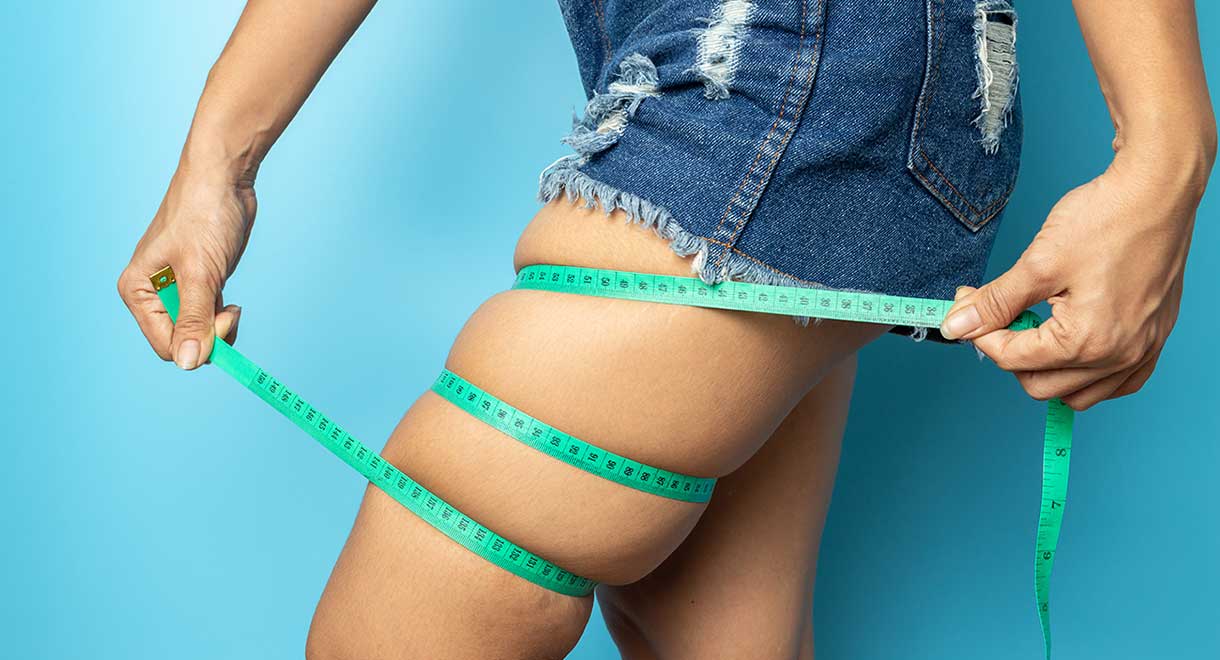Do You Have A Lot Of Excess Fat Or Fluid In Your Legs?
Fluid retention in the legs is usually caused by a weakness or deficiency of the lymphatic vessels that drain fluid away from the legs back to the heart. It is most common in people who have a lymphatic body type. See my Body Type Quiz.
Fluid retention causes the legs to look puffy and swollen and when you press on the swollen areas, it may leave a temporary dent under the skin; this is known as pitting edema. This is referred to as lymphedema. Some people with fluid retention take diuretic drugs to flush the excess fluid from the legs through the kidneys. This does not treat the cause. To strengthen the lymphatic vessels so they are not so leaky it is worthwhile taking vitamin C and bioflavonoid supplements. Other strategies that reduce the puffiness of the legs are lymphatic massage, using an inversion table, using an exercise bike or using a Pressure Therapy System.

A less common cause of increasing size of the legs is due to a condition called lipedema and occurs mainly in women. In lipedema, fat is distributed unevenly underneath the skin of the buttocks and legs and this starts in the upper legs. The top half of the body may be a size 8 to 10, but the bottom half of the body may be a size 16. Later, lipedemic fat may build up in the arms.
Lipedema (see picture below) can be wrongly diagnosed as obesity or lymphedema. In lipedema, the legs start to look larger and larger and column-like in appearance and are often tender to touch and bruise easily.

A worthwhile home treatment can be done by yourself using a Pressure Therapy System. This Pressure Therapy can reduce swelling and cellulite and improve circulation to the legs and help to drain fluid away from the legs back into the systemic circulation. This can be done in the privacy of your own home at an affordable price. The system is easily transportable so you can take it with you when travelling.
I recommend you see a doctor who specialises in lipedema who can organize:
- Manual lymphatic drainage and physiotherapy
- Compression bandages or special pantyhose
- Surgical treatment – there are surgeons who specialize in treating lipedema and use techniques such as liposuction to remove the lipedema fat.
References:
https://www.lipoedemasurgicalsolution.com/about/about-lipoedema/
https://lymphedemasurgeon.com/lymphedema-vs-lipedema/


Leave A Comment